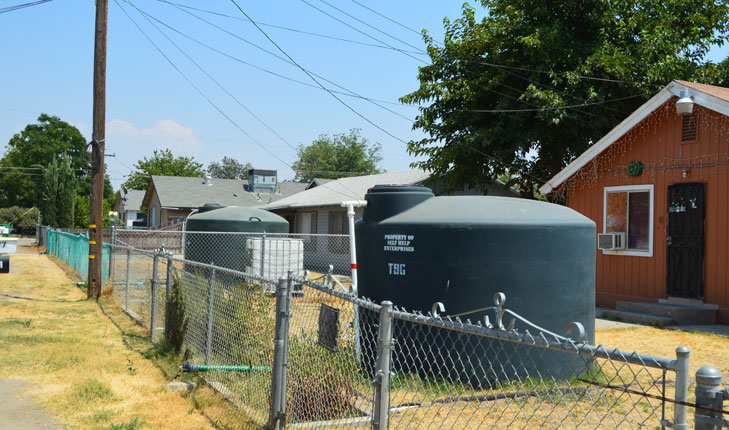Regions and communities across California are still grappling with water supply shortages, despite the relief brought by this past winter’s storms. While the precipitation offers some hope, it provides little consolation to communities reliant on depleted groundwater sources.
“It could be raining and flooding outside but when they turn on the faucet, nothing comes out,” said Laura Ramos, interim director of the California Water Institute’s Research and Education Division at Fresno State.
There are still thousands of Californians living in rural and disadvantaged areas who face the distressing reality of dry wells.
On average, about 40% of the water used by California residents comes from groundwater. It can take anywhere from months to several years for water to percolate into the water table, depending on the soil above. Sandy soil allows for faster percolation of water, while clay, which is less permeable, takes much longer.
Areas in the Central Valley have both sandy soil and layers of clay, which cause varied groundwater recharge rates. In some places the water table has risen by several feet already since the seasonal storms, Ramos said, while other areas remain unchanged as the water slowly makes its way down.
“Water goes where it’s easiest,” she said. “It will still make its way down through clay, but not as fast as through the sandy layers.”
Cordie Qualle, a lecturer in the Lyles College of Engineering at Fresno State, said more water is used than is replenished during a drought. While this may not pose a significant problem after a year or two of drought, he said it becomes increasingly problematic when it persists for three to five years. Such situations lead to drought declarations, water usage restrictions and limited allocations through the State Water Project and the Central Valley Project.
“That’s what happened to the water levels in all the reservoirs in California, essentially — they dropped because we took out more than was added by precipitation,” Qualle said.
While Qualle said future planned reservoirs would help manage the state’s water more efficiently over time, they wouldn’t necessarily change drought conditions. Due to finite reservoir storage, once those reservoirs are full, all the excess water gets spilled.
Water management is not an issue that can be addressed on a year-to-year basis, Qualle said. Current reservoir storage systems are based on a quasi-static model with minor fluctuations, he said, but climate scientists are predicting that the state will continue to experience drier dry years and wetter wet years.
“They seem to be right,” Qualle said. “We will have four to five years of really dry and then a wet year or two of insane runoff, and then back to the dry.”
The recent winter exemplified this, with one of the wettest years on record following three of the driest consecutive years.
What’s needed moving forward, Qualle said, is to restructure our understanding of hydrology and of how our water infrastructure works. He said we need to think about how to maximize our infrastructure to increase groundwater and surface storage so we can capture and store more excess runoff events for the next drought period, which is coming.
“It’s not a matter of whether we’re in a drought or in an excess water year – we’re just in a situation where every drop of water counts,” Qualle said.
Although California Governor Gavin Newsom rolled back some of the state’s most stringent drought restrictions in March, including a voluntary 15% reduction in water use that had been in place since July 2021, Ramos urged Californians to continue their water conservation efforts, even during wet years like this one.
“If we continue to conserve, water managers will have more surface water available to put into groundwater recharge systems to bank water in the aquifer for future years.”
(Story by Julissa Zavala; photo courtesy of the Community Water Center)





